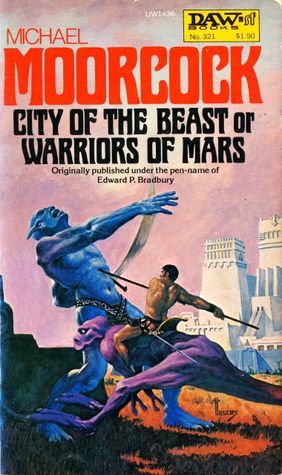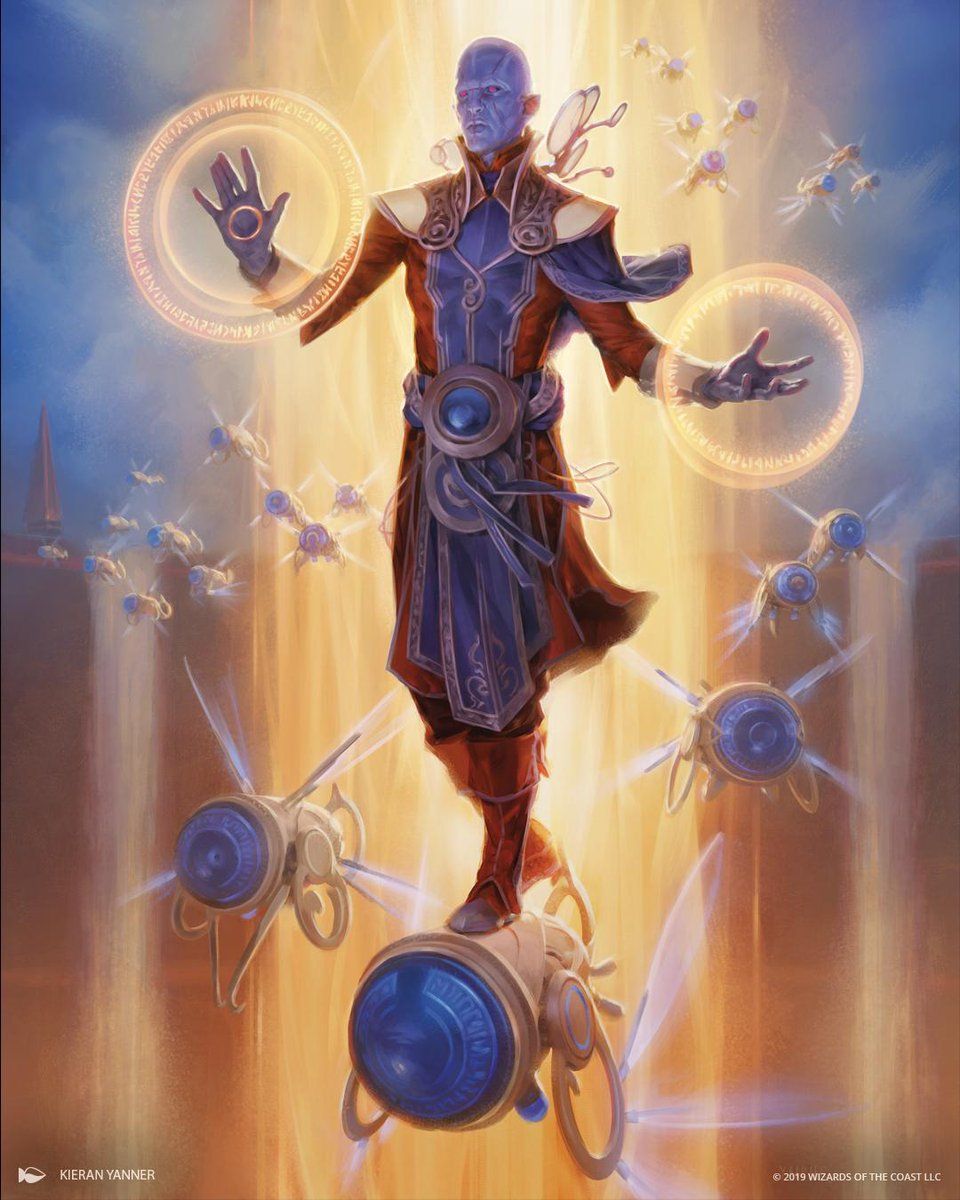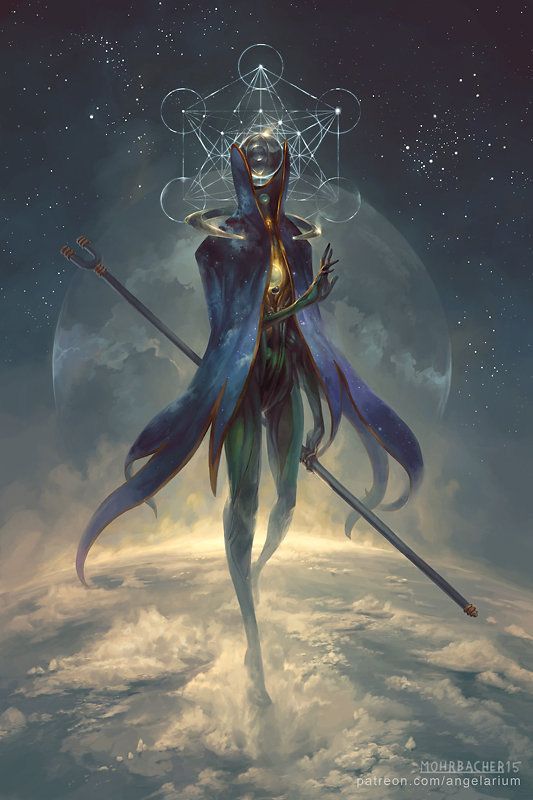Sword and Planet

BY THE LIGHT OF A STRANGE STAR,
a Look at the Science Fiction subgenre of Sword and Planet
by Joseph Armstead (JosephArmstead)
Stars and moons, alien kingdoms and space barbarians, strange cultures and courageous adventurers, vengeance and doomed romance ..., once upon a time these elements were the basic tenets of post- World War I-era weird fiction, the kind of episodic storytelling found in early 20th century pulp magazines like "Weird Tales", "Planet Stories" and "Amazing Stories". In a time when the reading public was still reeling from the loss-of-innocence and socio-political fallout of the end of the First World War, a new formula for imagination-driven, fictional narrative resulted in a very specialized the kind of often-serialized fantastic fiction. The fundamental components of western adventures and pirate stories were awkwardly blended into standard science fiction fare to birth a relatively popular, if critically and academically adolescent, literary chimera.
Building on the working class popularity of the Sword and Sorcery tales of Robert E. Howard's Conan Saga and the fanciful exploits novelized in Edwin Lester Arnold's Lieutenant Gullivar Jones story, the genre of "Sword and Planet" appeared. It was presented as a subgenre of Science Fiction (or even, perhaps, Science Fantasy) anchored by male-centric heroic-fantasy adventures whose name derives from the literary conceit of its protagonists engaging their adversaries in hand-to-hand combat primarily with weapons like swords, as opposed to ray guns, even in exotic Off-Earth settings often possessed of advanced technology.

Though Science Fiction's Sword and Planet subgenre actually predates the popularity of mainstream science fiction, its plot points and execution doesn't rely on any actual scientific specificity, the tales being instead swashbuckling tales of high adventure. The Sword and Planet subgenre is mostly true to its naming convention: containing both swords and planets, formulaically presenting the idea of an Earth-human male traveling to an alien planet by some esoteric means, where he meets and interacts with the primitive, vaguely human locals and becomes embroiled in all manner of adventures, usually centered around kingdoms and conquest with medieval court intrigues and battles, wherein the hero basically stabs villains with his sword. Sword and Planet stories are presented as a romanticized version of Space Opera. Often there are broad-stroked elements of Historical Fantasy included in the world-building. Anachronisms abound. So, too, unfortunately, does blatant sexism, veiled racism and cartoonish depictions of machismo wherein the human protagonist is generally considered more heroic and more virile than any native inhabitant of the alien world could ever hope to be.
Very little is offered in the way of explanation as to the WHY and HOWS of placing Terran Earth-humans on alien planets or why that planet's alien environment is compatible with organic life from Earth. All that is important is that the conditions do exist, allowing the mostly pure-hearted, strong-minded protagonist to travel that weird world and interact with its various idealized foreign inhabitants. Any technology referred to will be included in the story predominantly to move along the plot's action and is unlikely to closely follow any of the known laws of physics or adhere to any of the astronomical conditions of the planetary or celestial body on which the adventure is rooted.
Seeing as the subgenre often sidesteps all things scientifically rigorous in its physical settings and its technological trappings, it should be mentioned that for many of the Sword and Planet novels and stories, the ingredient of High Fantasy is included in its composition. Generally, "High Fantasy" is a term defined as fantasy set in a fictional alternative or "secondary" world, rather than being set in "the real", or "primary" world. It is a subgenre of fantasy often defined by its grand geophysical or topographical settings or by the epic stature innate to its characters and themes. Spell-wielding Sorcerers, brooding Kings & Queens, dark, rambling castles and mythical beasts like dragons or giant flying avian raptors often appear in the tales, even though the action may take place in an alternate Reality or on a physical planet other than Earth. Often included are sinister secret societies or guilds of depraved and unprincipled aristocrats that conspire to bedevil the protagonist as they undertake their heroic quests. Usually those secret cabals make use of necromancy and demonic-based magic in their efforts to defeat the hero or heroine. Again, no real reason is given for the odd pairing of the technological and the magical other than this is the environment the author felt best suited the plotline and characters in their tale. The use of Fantasy can also provide the author a "short cut" by which to gel the more fantastical and alien elements of their story in a recognizable groundwork that the average reader of the subgenre would easily understand.

In the genre, the most well-known examples are among the works of Edgar Rice Burroughs and his immensely popular John Carter of Mars series, Lin Carter's Jandar of Callisto and Under the Green Star series, the Michael Moorcock (writing as "Edward Powys Bradbury") series Kane of Old Mars, Leigh Brackett's Eric John Stark series, the Dray Prescott series by "Alan Burt Akers" (a pseudonym of author Kenneth Bulmer) and, in later years, the violence and erotica-driven Gor/Counter-Earth series by John Frederick Lange (writing as "John Norman").
Works like science fiction Grande Dame Andre Norton (a.k.a. Alice Mary Norton), in her Witch World series, and author Anne McCaffrey in her Dragonriders of Pern series often elevated the ingredient of High Fantasy over that of physics-driven technology in their stories, many of which were borderline Sword and Planet in focus.
Sword and Planet as a commercial subgenre is not nearly as popular in these post-Watergate & post-Vietnam/post-September 11/post-Iraq War days as it may formerly have been. Its tropes and metaphorical imagery no longer resonate or integrate as easily with the modern reading audience. The realities of socio-economic globalization, cultural diversity, sexual liberation and inclusiveness (and redefinition) have managed to drain the archetypical protagonists of the subgenre, mostly White Anglo-Saxon Protestant males cast as Saviors, of its myth-making power and popularity. The world and its social climate changed, while Sword and Planet, for the most part, had not until very recently as newer authors work to reshape its base components.
Despite its drawbacks, for many modern readers there is an allure to such fantastical stories that appears to transcend politics and scientific technological advancements --- plainly put, people enjoy reading about courageous, honorable swashbucklers confronting villainy in confounding human vs. alien "fish-out-of-water" situations. There is something of the old Saturday matinee movie serials about these stories and, when the story is presented well and with literary panache, the reading audience are ready to forgive the sometimes unwieldy anachronisms, social, technological, or otherwise. Perhaps because, above all else, these stories are representative of a new mythology and are, thusly, very entertaining morality tales. And make no mistake, these are very much indeed morality tales. The battle between Good and Evil is on full display in all its sententious, homiletic glory: the Earth-born human heroes bring a very definite sense of principled righteousness into the science fictional/science fantasy proceedings that the tale's author hopes will bond the reader to his characters and to the overarching goals of their quests.

From my own viewpoint as an author, I find that the requisite world-building necessary as a foundation for Sword and Planet tales is an irresistible challenge. An author has to create a world that, even though it may be scientifically or structurally impossible (or at the very least "implausible"), makes sense within the framework of the story and remains true to its own laws and conceits. It is important that the reader "buy into" the concepts presented as the backdrop for the protagonists' adventures and that the characters in the story react in a way that still manages to be "human" despite its alien trappings.
There will be pathos, there will be thrills and chills, and there will be high romance. This is, after all, an escape from the restrictive bonds of our common Reality.
So if, in your literary journeys and misadventures, you encounter the likes of Eric John Stark, Jandar of Callisto, John Carter of Mars, Buck Rogers or Flash Gordon, Dray Prescott, or author Manning Lee Stokes' (writing as "Jeffrey Lord") Richard Blade series, remember to take it all with the proverbial grain of salt as you dive into their daring, flamboyant escapades.

Example of Sword and Planet on Wattpad:
The Withered Land series by JosephArmstead
My own personal examples of the NEW breed of Sword and Planet fiction are on display in my episodic "The Withered Land" series, of which the short novels "D'Spayr: A Knight in the Withered Land", "The Traveler in Red: Warlords of the Withered Land", and "The Withered Land: Dragons and Marauders" are prime illustrations.
The Sword and Planet-oriented series, which focuses on the characters D'Spayr and Nygeia, an embittered Knight of an alien world who has rebelled against his masters in an oppressive transplanetary empire, and a human Earth woman who assumes the identity of a dread Sorcerer-Princess as she travels from distant, modern-day Terra, are chronicled as follows:
D'Spayr: A Knight in the Withered Land --
In a decayed and dying alien world that was once center of a vast planetary empire, an embittered rogue knight, soldier to that fallen empire, traverses a bizarre landscape discovering strange and sinister truths about the leaders he once served and confronts mysterious warlords who have now carved the world into their private kingdoms.
The following excerpt epitomizes the focus and restructuring of the classic Sword and Planet elements:
"Amazing. It was a continual source of amazement to her.
Her head still ached...
Her soul had once again been hijacked back to that place, that awful dreary realm of misery, discontent, simmering rage and lost dreams. Well, at least that was how she looked at it, how she reasoned it, dreading inside the secret knowledge that, whether she liked it or not, she was inescapably bound to the tortured fate of this Reality where she'd been born.
The pain of continual rebirth was really quite exquisite, marvelous even, and this was, despite its unending stillness and deep grayness, a place of marvels.
The headache had heralded the beginning of the transition from Here to There. Yet even after her arrival, her transplacement, the ring of pulsing agony that wrapped her skull in an electric buzz remained.
Rebirth. The after-effects of her rebirth were still with her.
She hated the fact that it thrilled her, each and every time. She worked so hard to purge herself of that twisted animal, that thing that licked its lips in anticipation of the pain, that her parents had created so very long ago, had thoughts she'd buried it under a mountain of new impressions, sensations and memories. But it would not die.
Neither would she.
Mere hours ago she'd sat comfortably in her wheelchair, in her library with its grand latticed windows overlooking the interior of her vast greenhouse garden, a tall woman, her dead legs draped with an expensive handmade afghan throw and a warm cup of tea sitting in porcelain on a reading table at her side. Aged and infirm, yet still possessing reserves of physical strength and mental faculties that raced at a speed that made light look sluggish, she had been enjoying her late afternoon, reading and listening to classical music from her stereo system. And then the light that streamed past the greenhouse roof and through the library windows deepened to resemble candlelight passing through a shade of thinned blood and the headache began.
The Summons.
Impossible. The only beings capable of such an extrasensory call across Time and Space, her parents, were dead, slain by her own hands. Yet there it was, undeniable... The Summons. The Laws of Attraction took over at that point, the corollary of Retracting Co-Linearity ruled, Like called to Like, the Whole demanded the return of its Splinter, gravitational and temporal cohesion roared angrily, Being and Affinity inverted and she was pulled back into the grasp of the Withered Land.
She was shunted from one dimensional Reality to another. It was a miracle, a dark marvel.
Nygeia, Princess of the Withered Land and daughter to the late unlamented Pahrayah, was forcibly returned home. She allowed a single black tear to fall from her brimming eyes and trail a charcoal streak down her face.
Her amazement did not deter her from deciding she'd kill whosoever had summoned her back.
She hated this place."

Inspirations:
Setting

Characters



Music
https://youtu.be/LM6LsmEqYMI
Bạn đang đọc truyện trên: AzTruyen.Top